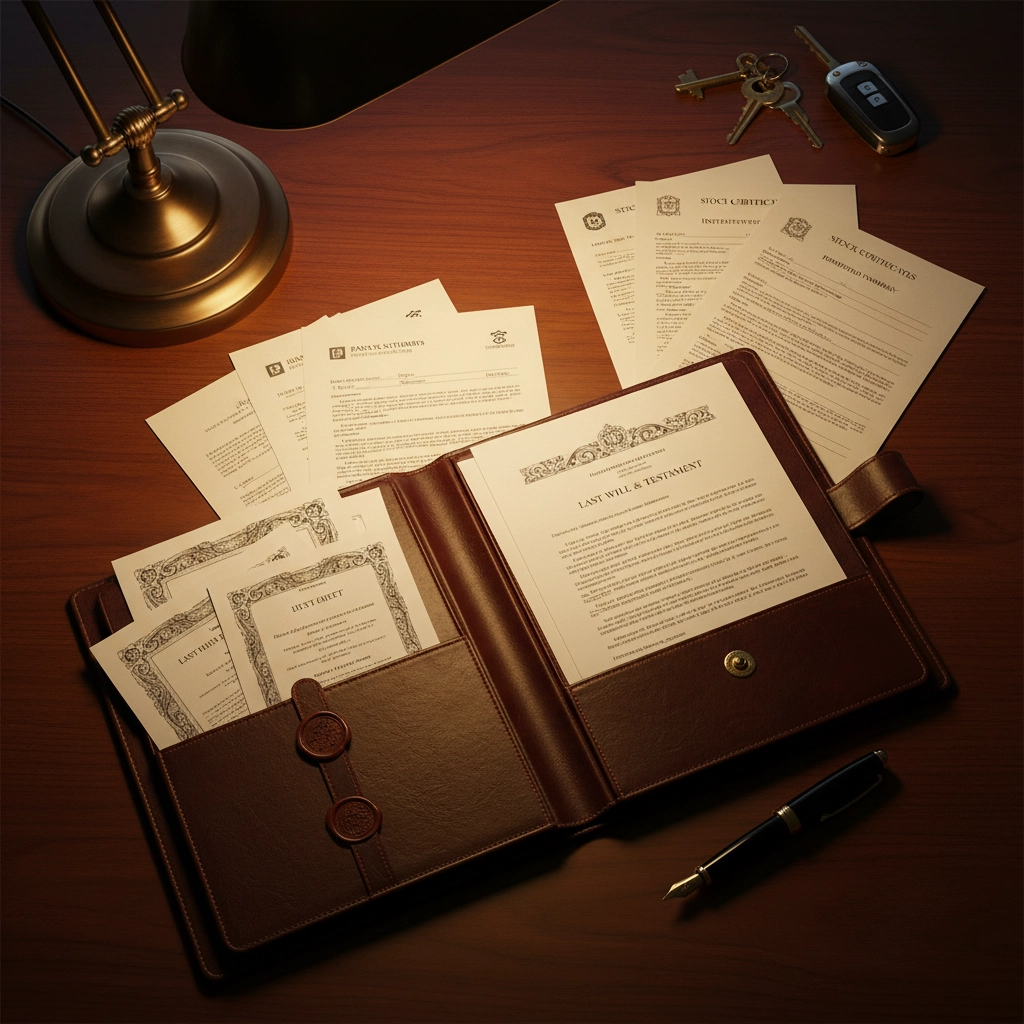7 Mistakes You're Making with Your Living Trust (and How to Fix Them Before It's Too Late)
- Barron The Law Dog
- Sep 19
- 6 min read
Updated: Oct 6
Creating a living trust represents a smart move for Inland Empire families who want to protect their assets and spare their loved ones from lengthy probate proceedings. However, many people unknowingly make critical errors that can undermine their entire estate plan, potentially costing their beneficiaries time, money, and unnecessary stress.
These mistakes happen more often than you might think. Even well intended families who invest in professional trust creation can fall into common traps that defeat the purpose of having a trust in the first place. The good news is that most of these errors can be fixed with prompt action.
Mistake #1: Creating a Trust But Never Funding It
The most devastating error involves creating a beautifully crafted trust document that sits empty because no assets were ever transferred into it. This mistake affects nearly 60% of people with living trusts, according to estate planning attorneys.
A trust without assets functions like a safe without valuables: completely useless. When assets remain outside the trust, they still go through probate, defeating the primary reason for creating the trust. Your family will face the same delays, costs, and court supervision you tried to avoid.
How to Fix It: Start by creating a comprehensive inventory of all your assets. Real estate requires new deeds recording the property in the trust's name. Contact your county recorder's office for specific requirements in Riverside or San Bernardino counties.
For financial accounts, visit each bank and investment firm to fund accounts in the trust's name. Most institutions have standard forms for this process. Business interests, vehicles, and personal property also need formal transfer documents.
Complete this funding process immediately after trust creation, not later. Set aside dedicated time each week until every asset is properly transferred.

Mistake #2: Choosing the Wrong Successor Trustees
Many people select successor trustees based on family hierarchy rather than actual capability to manage financial responsibilities. Others fail to name any successors, leaving their trust without proper management when needed most.
Your successor trustee will handle complex financial decisions, potentially manage assets for years, and navigate family dynamics during emotionally difficult times. Choosing someone unprepared for these responsibilities can create chaos for your beneficiaries.
How to Fix It: Evaluate potential successors based on financial experience, availability, and ability to remain impartial among beneficiaries. Consider these qualities: organized record-keeping, experience with investments, emotional stability during conflicts, and geographic proximity to handle administrative tasks.
Name both primary and backup successor trustees. If family members lack suitable qualifications, professional trustees or corporate trust companies provide objective management, though they charge fees for their services.
Document clear instructions for your successors. Schedule a meeting to explain their responsibilities before they're needed. Ensure they understand how to access accounts, manage investments, and communicate with beneficiaries.
Mistake #3: Transferring Assets That Already Avoid Probate
A common error involves moving assets with existing beneficiary designations: such as retirement accounts, life insurance policies, and annuities: into the trust. These assets already bypass probate through their beneficiary designations.
Re-titling these assets to the trust can trigger significant tax consequences. For retirement accounts, this mistake can result in immediate taxation of the entire account balance, potentially pushing beneficiaries into higher tax brackets.
How to Fix It: Keep assets with beneficiary designations in their original form. Review and update beneficiary designations annually to ensure they reflect your current wishes.
Consider naming your trust as a contingent beneficiary if primary beneficiaries predecease you or if you're concerned about creditor protection. Consult with a financial advisor before making changes to retirement accounts, as tax implications vary based on account type and beneficiary relationships.

Mistake #4: Never Updating After Life Changes
Many people treat their trust as a "set it and forget it" document, ignoring how life changes affect their estate plan. Marriage, divorce, births, deaths, significant asset changes, or relocating to different states all require trust modifications.
An outdated trust can exclude new family members, include people you no longer want as beneficiaries, or fail to address changed financial circumstances. California law changes also affect trust administration and tax implications.
How to Fix It: Schedule annual trust reviews, preferably around the same time each year. Immediately update your trust after major life events: marriage, divorce, birth of children or grandchildren, death of beneficiaries or trustees, significant changes in asset values, or relocation to another state.
Keep detailed records of all modifications. Ensure your successor trustees receive updated copies and understand any changes. Consider setting calendar reminders for annual reviews even when no major changes occur.
Work with qualified estate planning professionals who stay current with California law changes and can identify necessary updates during reviews.
Mistake #5: Over Complicating Distribution Plans
Some people create overly complex distribution schemes that confuse trustees and beneficiaries, while others oversimplify to the point where important scenarios aren't addressed. Both extremes can lead to family conflicts and unintended consequences.
Complex distribution plans might include intricate formulas, multiple contingencies, or unclear language that creates interpretation disputes. Oversimplified plans often fail to address what happens if beneficiaries predecease you, become financially irresponsible, or face creditor issues.
How to Fix It: Strike a balance by clearly stating your intentions in plain language while addressing potential scenarios. Include specific instructions for different circumstances: what happens if a beneficiary dies before you, becomes disabled, or demonstrates financial irresponsibility.
Consider gradual distributions rather than lump sums for younger beneficiaries. Include provisions for education, health emergencies, and other special needs that might arise.
Use percentage-based distributions rather than fixed dollar amounts to account for changes in total asset values. This approach ensures your distribution plan remains proportional regardless of market fluctuations or asset growth.

Mistake #6: Missing the Residual Clause
Even with careful planning, some assets might be overlooked or acquired after trust creation. Without a residual clause, these forgotten assets could end up in probate or, in extreme cases, ceased to the State of California.
This mistake often involves smaller assets that seem insignificant at the time but can accumulate value: collectibles, intellectual property, small business interests, or assets acquired through inheritance or gifts after trust creation.
How to Fix It: Ensure your trust includes a comprehensive residual clause that captures any assets not specifically mentioned elsewhere in the document. This clause acts as a safety net, directing how overlooked assets should be distributed.
The residual clause should specify whether forgotten assets follow the same distribution pattern as other trust assets or receive special treatment. Include language that addresses assets acquired after trust creation through purchase, gift, or inheritance.
Review your residual clause during annual trust reviews to ensure it still reflects your wishes and addresses any new types of assets you've acquired.
Mistake #7: Poor Coordination with Other Documents
Many people create their trust in isolation without ensuring it works harmoniously with their will, power of attorney, healthcare directives, and other estate planning documents. This lack of coordination creates conflicts and confusion for family members and trustees.
Inconsistent beneficiary designations across different documents can create legal challenges. Powers of attorney might grant conflicting authority over trust assets, or healthcare directives might not align with trust provisions for managing assets during incapacity.
How to Fix It: Review all estate planning documents simultaneously to ensure consistency. Your will should include a "pour-over" provision directing any assets not in the trust to be transferred to it upon death.
Update beneficiary designations on all accounts to align with your trust's distribution plan. Ensure your financial and healthcare powers of attorney complement your trust's provisions without creating conflicts.
Verify that the same trusted individuals are named in appropriate roles across all documents. If you update trustees, also consider whether those changes should apply to agents under your powers of attorney.
Schedule coordinated reviews of all estate planning documents, preferably with the same attorney who created your trust to ensure seamless integration.
Taking Action Now
These seven mistakes can transform your carefully planned trust into a source of problems rather than solutions. The longer you wait to address these issues, the more complex and expensive corrections become.
Start by reviewing your current trust document and identifying which mistakes might apply to your situation. For complex issues or if you're unsure about any aspect of your trust, consult with qualified estate planning professionals who understand California law and can guide you through necessary corrections.
Your trust should serve as a reliable tool that simplifies asset management and protects your family's future. With proper attention and periodic updates, your living trust will accomplish exactly what you intended when you first created it.
Comments